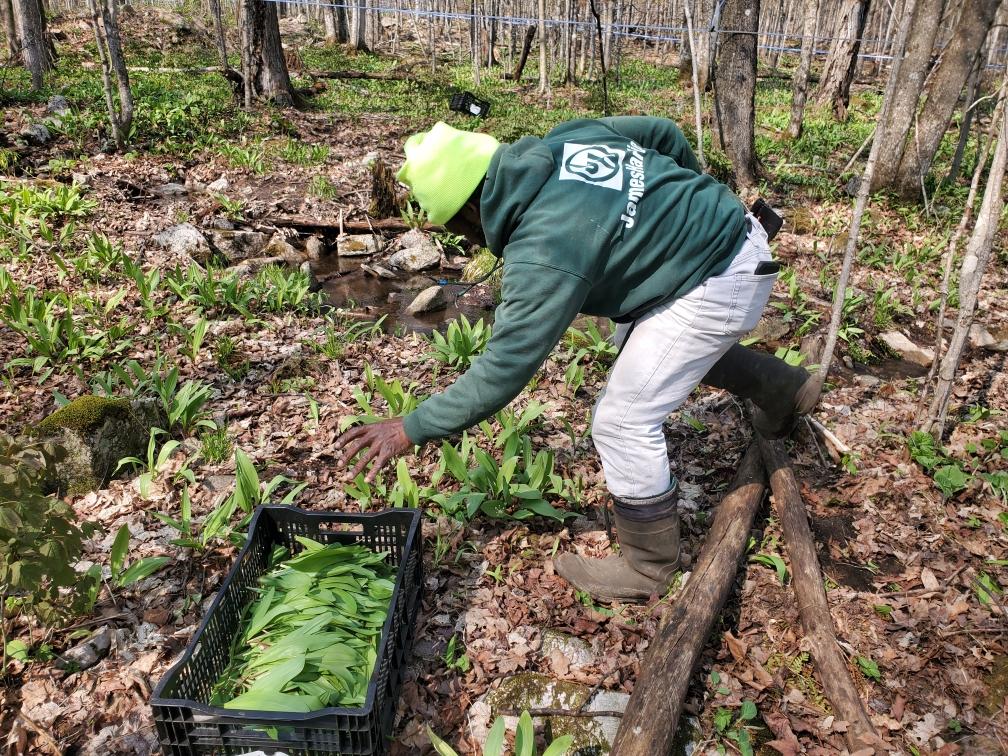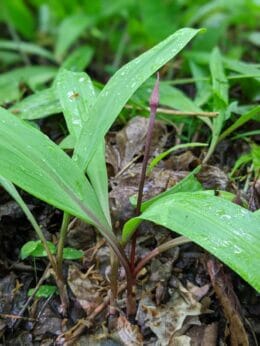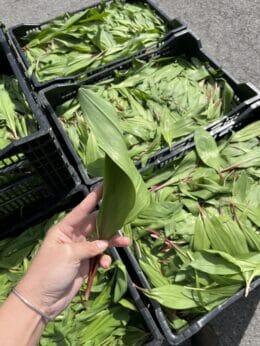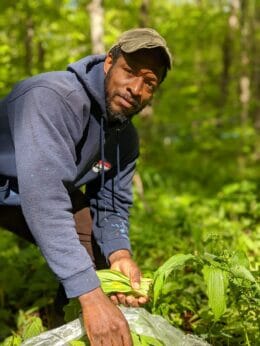Ramps, a kind of wild onion, are foraged from forest floors. But amid growing popularity, there’s a right way and a wrong way to harvest.

Ramps season has come to an end, and these wild onions have yet again faded from view after a brief frenzy of attention. A spring ephemeral species—so named because its harvest season lasts just a few weeks, from late March to early June—ramps are defined by their rarity. But for the plants, insects and animals that share their ecosystems in forested areas of the Northeastern United States and Southern Canada, their presence is vital year-round.
While Indigenous communities have gathered ramps for countless generations, the last two decades have seen a marked increase in people from all backgrounds seeking them out on forest floors, farmers market stands and restaurant menus. The widespread fascination with ramps reflects a growing general interest in local, seasonal ingredients that could positively impact our national food system; however, without a deeper awareness of sustainable foraging practices and the consequences of the climate crisis, it could do more harm than good.
Dr. Michelle Baumflek, a research biologist with the United States Department of Agriculture’s Forest Service, has been working with the Eastern Band of Cherokee Indians since 2016 while also collaborating on a long-term study of ramps pioneered by ecologist Dr. Joan Walker. Research from these collaborations indicates that the ramp populations in the southern Appalachian region have declined by about two percent in the past 20 years. That percentage may seem small, but the fallout could be felt in a big way in the region’s forests and beyond.

Ramps are an important part of the ecosystem of the forest floor. (Photo: Ethan Frisch)
“Ramps play an important role in forest nutrient cycling,” Baumflek explains. “They take up nutrients in early spring as they grow, and when the leaves die back, they return some nutrients to the ecosystem. Ramps will flower after the leaves are done for the season—usually in June or July—and, at that time, they provide food for their pollinators, which include several species of bees.”
The recent decline in ramps is due to a variety of factors that may include both overharvesting and climate change. “Ramps are often found in rich cove habitat, which are relatively moist areas that have fertile organic soils,” says Baumflek. “Climate change may impact rich cove habitats in several ways, including shrinking cove habitats and increasing invasive species, which may affect ramps.”
While addressing the climate crisis requires large-scale change at the institutional level, the issue of overharvesting is something that can be resolved by educating individuals to be conscious consumers of ramps.
Unlike other popular foraged foods, such as mushrooms and even other types of onions, which may be ready to harvest in as little as two weeks, ramps take around seven years to reach maturity. Frequent foragers may see that the plants cannot keep pace with the dramatic rise in demand for ramps, but home cooks and restaurant chefs may not have this awareness.

Without the bulbs, harvested ramp leaves wilt quickly. (Photo: Alyssa Melendez)
Michael Farrell works with a small team of foragers that harvests ramps from 10,000 acres of forested land in New York and Vermont that he oversees as CEO of The Forest Farmers, an agroforestry business geared toward conserving mature forests while generating sustainable income for farmers. For a while, these ramps were sold at farmers markets in New York City, but, by 2020, Farrell grew concerned about depleting the ramps on this land. It was around this time that he began working with Ethan Frisch, co-founder of the spice company Burlap & Barrel, and forager Omar Thelwell.
“There are two different types of ramps here,” says Thelwell. “They’re all beautiful and fragrant and have green leaves, but the stems differentiate them—one is white and one is purple.”
Thelwell travels from his home in Jamaica each year to harvest ramps, apples and other crops in the US. As with most wild edible plants, ramps must be harvested by hand. “You bend down and with a knife or scissors, you cut the leaves. The bulb stays in the ground so that it grows back the next year,” says Thelwell. It is a simple process, but not common practice.

Forager Omar Thelwell travels to the US from Jamaica to harvest ramps. (Photo: Ethan Frisch)
“Almost all the ramps that are sold in the marketplace come with the bulbs,” says Farrell. Imagine, for a moment, the last time you saw ramps—whether at a market or on Instagram—and you are likely to envision the full plant, from the fringe of roots at the base of the pale bulb all the way up the thin stem to the pointed tip of its leaf.
Ramps, as a member of the Allium family, are a perennial plant, meaning that their bulbs can produce new life each year, so long as they have the right growing conditions. Harvest just the leaves and the bulb will regrow the following spring, but take the whole bulb and you will not find any ramps on that patch of land again.
Although harvesting only the leaves is the most sustainable choice, people expect to buy the plant wholly intact, and without the bulbs, harvested leaves wilt quickly, which is less appealing to customers.
Farrell and Frisch worked together to address these problems by developing a unique method for harvesting and drying the ramps leaves, creating the first dried ramps product available for commercial retail.
“You get all the flavor and all the nutrition from the ramp greens,” says Farrell. “And we get to keep the forest full of ramps for decades to come.”
It is critical that all ramps enthusiasts adopt this longview mentality, along with an understanding that these wild onions may exist in the public eye for just a few weeks each year, but they must be allowed to exist in the forest all the other days of the year, too. For Baumflek, this also means recognizing the ecological and cultural importance of ramps and, when foraging, acting from a place of “respect and reciprocity—understanding that people are in relationship with ramps and with the forests in which they grow, and that we need to take care of each other.”
This was very interesting! I had no idea that harvesting Ramps should ONLY involve the leaves if there are to be future Ramps.
Could they be grown commercially, so there would be replacement bulbs?
As a farmer and harvester of ramps, I must say that sustainable harvest of the bulbs Is quite possible and when done at no more than 50%, seems to increase the overall size of the bulbs. Yes these ecosystems are valuable, but if we care for them and keep equipment out, protect the soil we can continue to have a bountiful harvest indefinitely.